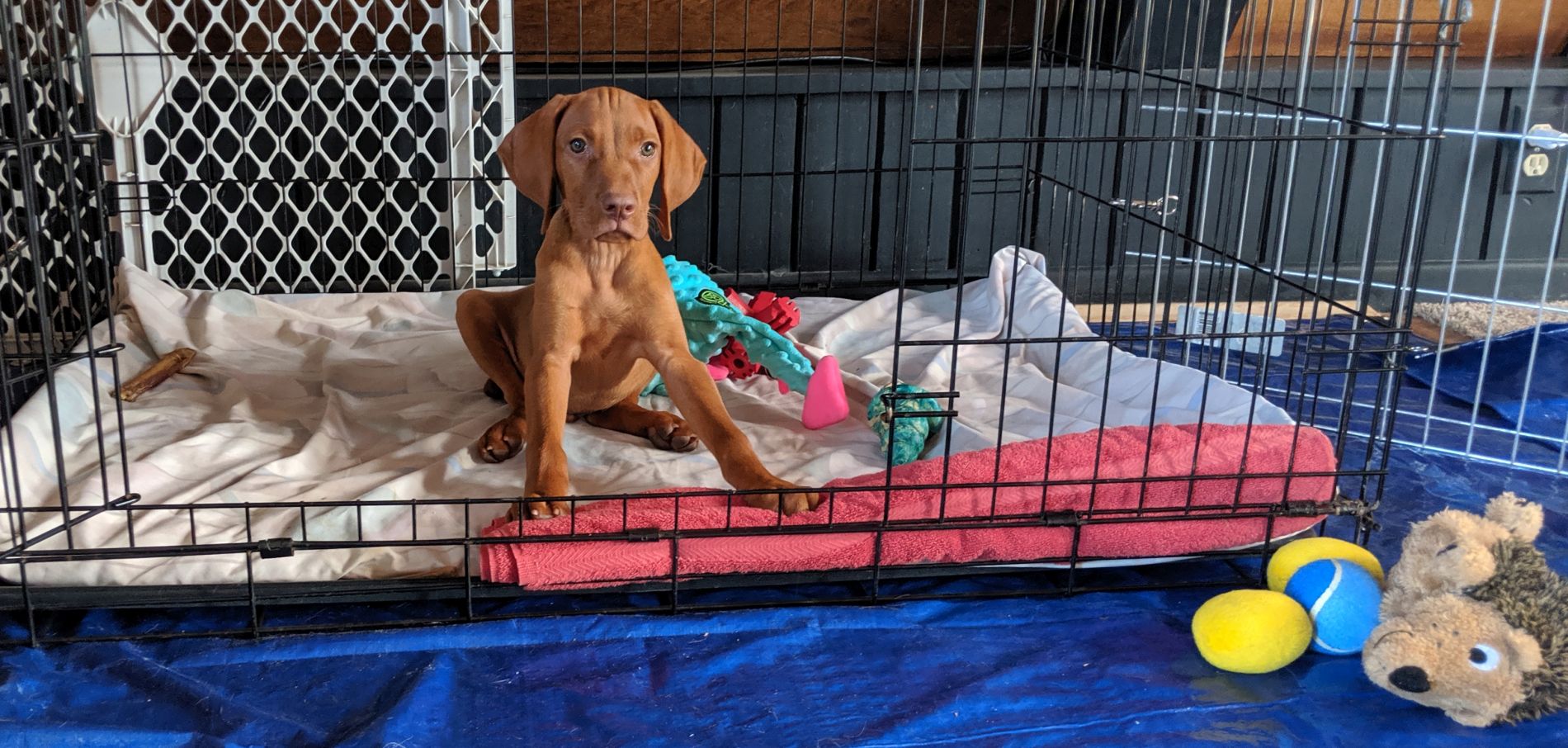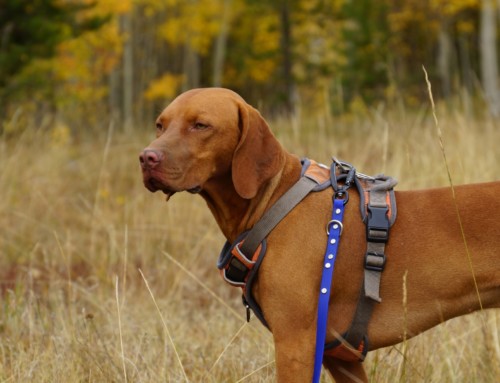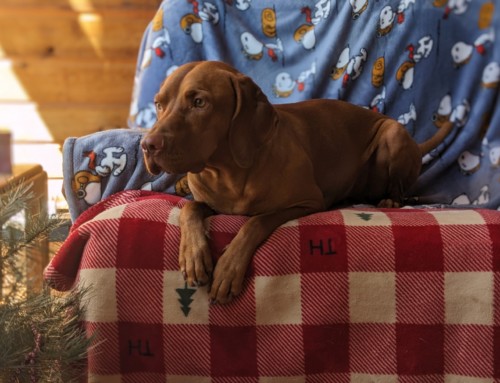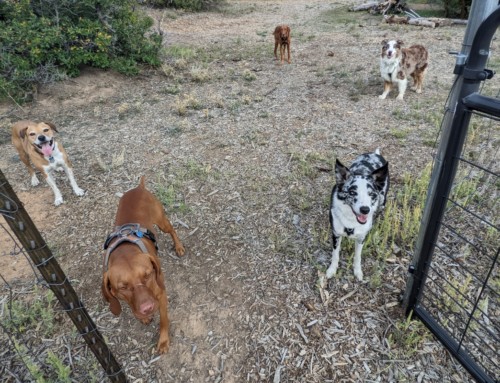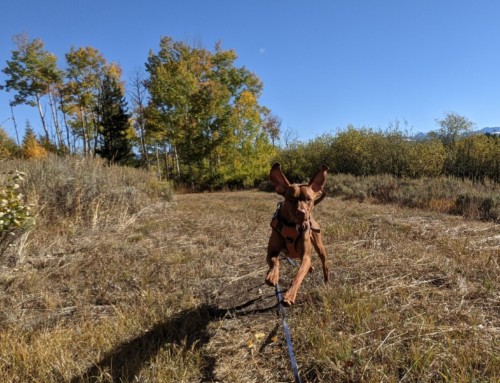DOG TRAINING OFFERED IN-PERSON AND ONLINEOur dog training services are delivered in almost any format that meets your needs. We have GROUP CLASSES at our indoor and outdoor facilities on our farm, ONLINE LIVE STREAMING classes, and SELF-PACED VIDEO-BASED training through our Online Dog Training Course. Our PRIVATE TRAININGS can be done in-home, outside, in public dog-friendly locations, at our facility on our farm, online via phone or video conferencing and through email. |
Some of us have planned for months before we bring our puppy home. Sometimes, it's a last minute decision and there's not a lot of time for planning. Either way, we still need to make sure we have what we need to be successful with our new pup.
The right set up at home can have a huge impact on how successful your pup is at settling into their new household.
Here's how we go about setting up for a new puppy:
- We set up a wire crate on our main floor in the dining room
- this is the room with immediate access to the backyard
- has easy-to-clean floors
- tarp under the crate to protect the floor from scratches
- wire crate provides for better air circulation especially in the hot summer
- We set up a travel crate (hard plastic with a wire door) in our bedroom
- for sleeping at night
- although we set this up, we actually are temporarily using an ex-pen instead for the short term
- Each crate has:
- a “bed” with blankets or towels rather than a “dog bed” with stuffing
- a sheet to cover the blankets/towels for easy removal/washing if needed
- at least one toy to play (the sleeping crate does NOT have squeaky toy!)
- at least one chew item (we use bully sticks for this)
- Ex-pen or gated area that includes the crate
- The crate on our main floor has an ex-pen attached to the crate
- To create a larger area to hang out when not closely supervised
- To prevent needing to close in the crate for now until further along with training
- Can have one in the bedroom if needed, depending on age of pup and circumstances
- Make sure penned area does not have any potential dangers such as:
- electrical cords
- shoes to chew on
- tempting tablecloths, shoes, etc. to chew on
- cabinets that are left open or easily opened
- trash cans without a secure lid
- Pee pads or no pee pads? Depends on your circumstances, such as age of pup, weather outside, etc.
- We are NOT using pee pads at all
- Our pup was already being trained to potty outside before we brought him home
- If pup is confined for too long to be able to reasonably hold their bladder, pee pads at the opposite end of the ex-pen from the crate can be used as a temporary measure
- Tarp set up in the ex-pen area outside the crate
- To protect the floor
- If floor is tile/etc. that is easy to clean, you might not need this
- If floor is carpet or other absorbent surface, a tarp can make for much easier cleanup in case of accidents
- If we do have accidents, the pup is peeing on a tarp = a surface that will not normally be in our house for the long term
- thus we avoid developing the habit of peeing on any surface in our house
- Toys
- A variety for now to find out what kinds of toys our new pup likes
- Plush/soft toys
- Hard rubber toys
- Long toys we can hold and pup's teeth cannot get close to our hands!
- Squeaky toys
- Other options, though we caution against rope toys for many pups who will chew and swallow rope threads
- At least a couple of toys in each area that the pup is allowed for now.
- For us, that's the crate/pen on the main floor
- For us, that's also the bedroom crate/pen
- For us, that's also on the deck/outside area
- A variety for now to find out what kinds of toys our new pup likes
- Chews (bones, bully sticks, etc.)
- We use primarily bully sticks
- We also give our dogs raw meaty knuckle bones – but not quite yet and only outside!
- Some people use rawhides, but there are cautions about these!
- Some people use hard rubber or plastic type toys for this, though be careful about these too!
- Some people use pigs ears, tendons, and other options
- Some people use antlers, cow hooves, etc. though be careful – some pups can break their teeth on these
- Water and food bowl appropriate to size
- Water bowls are set up where our pup hangs out
- We do not give access to water during the night, however
- We provide fresh water at least once per day, and WASH the bowl out regularly
- Food bowl is only out at meal times
- Other times is out of reach
- Cleaned after every meal
- Beds
- For crates/pens were detailed above
- You might have other dog beds in areas your dog is allowed when supervised by you
- We have large dog beds from our previous dogs
- For now, our pup is only allowed access to these when snuggling with us in the evening and closely supervised
- Nature's Miracle or other enzymatic pet cleaner is kept in close reach to thoroughly clean any messes. For messes on hard floors, we use vinegar, but for carpets or other absorbable surfaces, we use Nature's Miracle
- Paper towels and/or rags for cleanup are in easy reach as well for accidents, water spills, etc.
- Collar and/or harness
- Some people keep collars on all the time, we DO NOT
- We use a harness for walks and outings away from the house/back yard
- We NEVER have collars on our pups when in crates/pens to prevent from catching and getting tangled
- We rarely use collars on our dogs
- Leash in easy reach
- Lightweight for small pups; heavy duty leashes can be too heavy for youngsters
- We have different length leashes
- We primarily use 8-10 foot leashes for our walks to allow more room for exploring
- We have 6 foot leashes for vet visits or other places we need pups in close
- Food for meals is ready to go when the pup arrives home
- Food bowl appropriate for the pup's size
- Treats in easy reach for any training/reinforcement needs
- Securely fenced yard for pottying and playing
- Supervised closely at first
- Watch for any potentially toxic plants in area
- Check for any other potential dangers such as nails protruding, sharp corners, chipped paint, etc. that puppies could chew on or get hurt on
- Clean up stool right away to prevent pups from either eating it or stepping in and tracking indoors. (Gross, we know, but it happens!)
That covers most of it, we think! Look closely at your space and consider what else might be a potential danger or just something that could produce a bad habit you don't want to develop. Prevention now makes things much easier in the long run.
To visually see our setup, please play the video below.
Our goal is to positively impact the lives of as many dogs and their families as we can, in part through our extensive library of video, infographics and text articles. 
|

